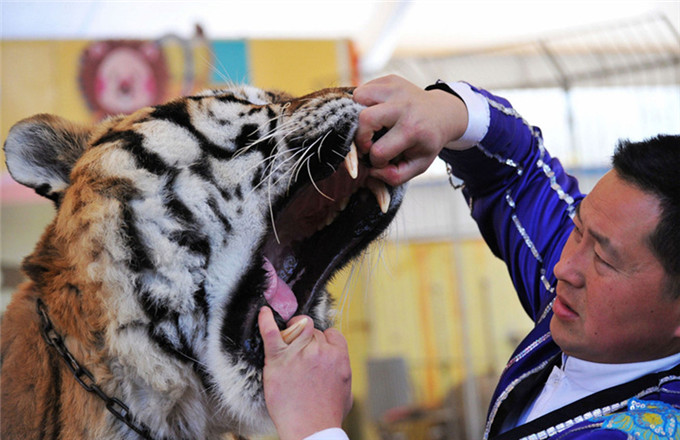Calligraphy aids language learning
|
A second grader at Waddell Language Academy in North Carolina draws the character for "sheep" in the seal and bronze calligraphy scripts. Yan Weihong / China Daily |
Two years ago, the Confucius Institute at Pfeiffer University in North Carolina initiated a trial calligraphy immersion course in a K-8 language school to accelerate their learning of the Chinese language.
"Our mission is to teach Chinese language and to promote the culture," said Yan Weihong, director of the Confucius Institute at Pfeiffer. "Language and culture cannot be separated; so, we're trying to find out how we can use the culture aspect of calligraphy to support the language learning."
After the initial trial run in May 2011 at Charlotte-based Waddell Language Academy, the program was expanded in August 2011 to 10 Chinese calligraphy-immersion classes for second grade through fifth- grade class levels. This spring, the Confucius Institute at Pfeiffer further expanded its calligraphy program to fifth grade through eighth grade at Metrolina Regional Scholars Academy.
"Our program is unique because we teach calligraphy through the oracle bone and bronze scripts," Yan said of the pictographic styles. "We have found that students learn the characters quicker using these scripts because it's like a drawing class."
Yan believes these ancient scripts are more effective than today's standard calligraphy script used in writing because the oracle bone and bronze scripts look more like their original sources, such as rain falling from the sky or a mountain, as opposed to the "more abstract" standard script, which students also practice in the course.
At Waddell, 300 students attend the calligraphy classes, which are taught in Chinese because the students are enrolled in the Chinese language immersion program, which instructs general classes, including social studies, history, art and mathematics, in Chinese.
At Metrolina, which isn't a language immersion school, the course is taught in English and 160 students enrolled this semester.
"The program is for basic learning," Yan said. "We don't want to build a Picasso here, we don't want to build an American Wang Xizhi or educate an Ouyang Zhongshi because the Chinese character and calligraphy has such a deep culture, philosophy and theory to it."
Wang Xizhi is known as the "Sage of Calligraphy" from the 4th century and Yan regards Ouyang Zhongshi, who is an adviser for the elementary calligraphy program, as the Picasso of calligraphy in China.
In addition to learning new characters through calligraphy, students are introduced to important figures in Chinese history and the evolution of different calligraphy styles.
"Honestly, I would say that the Chinese calligraphy immersion program at Waddell is leading the world's calligraphy teaching," Hong Liang, a China-based calligraphy expert, told Yan after a visit to Waddell in March 2012.
"Setting up the calligraphy program at Waddell Language Academy was a great innovative academic strategy and a highly productive method for the Chinese language teaching," Zhao Hong, a calligrapher expert and professor at Beijing Capital Normal University, told Yan after watching a video of the class. "By learning the art of calligraphy, not only can students get a sense of its beauty, but they can also improve their Chinese language learning and Chinese characters recognition."
Yan said finding qualified calligraphy teachers remains a key challenge. Current guidelines held by the Hanban organization, which oversees the Confucius Institute network, contribute to this issue.
"We can find a whole bunch of qualified teachers in China, but their English is not so good," Yan said. "We urge Hanban to break the red tape because the rule is we must select teachers from among only universities. Some calligraphy teachers can speak English, but they do not work in the university."
The Confucius Institute Pfeiffer director is in talks with Hanban and must present an official proposal to gain access to non-university teachers.
"Once we get the teachers, we really want to expand our program among other schools in the area," Yan said. "We have had several meetings with several schools here where we have presented videos of the program. They love the program and want to provide their students with the same opportunity."
(China Daily 05/17/2013 page11)





















